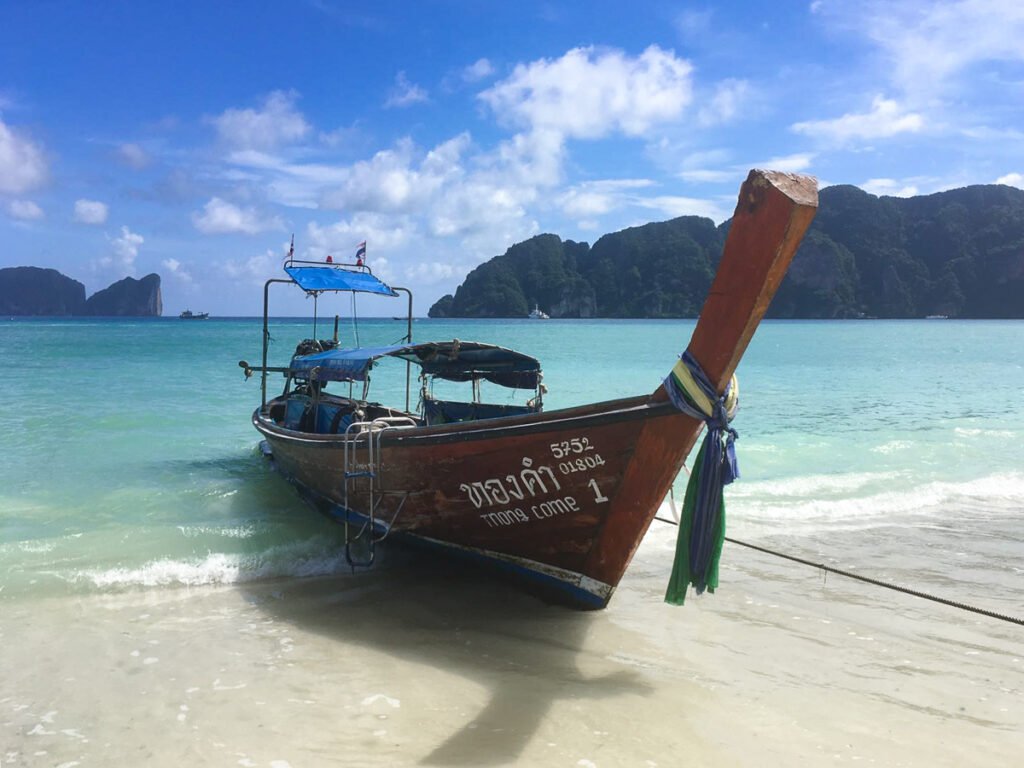Backpacking in Thailand with friends turned out to be one of the most unforgettable adventures ever. From the moment we landed, the vibrant energy of Thailand captivated us. Over the next few weeks, we explored everything from ancient temples to serene beaches, soaking in the culture and natural beauty that makes this country so special.
In this blog post, we’ll share the highlights of our journey, along with tips and insights from our own experiences. Whether you’re planning your own trip or just dreaming of adventure, join us as we recount our incredible backpacking adventure through Thailand and Cambodia.
Affiliate disclosure: This article contains affiliate links. If you choose to make a purchase through them, we may earn a small commission at no additional cost to you. These commissions help us continue creating helpful travel guides, tips, and inspiration. Thank you for your support!
The Best Time to Go Backpacking in Thailand
The ideal time to visit Thailand is during the cool season, from November to February. During these months, the weather is more comfortable, with temperatures ranging from 20°C to 30°C. The humidity is lower, making it perfect for outdoor activities like trekking, beach-hopping, and exploring temples. However, do keep in mind that popular spots can be crowded, and accommodation prices might be higher.
We went in June which is the start of the rainy season (June-October). While we did experience some heavy downpours, we were able to secure great bargains on flights and accommodation. For budget-conscious travelers, this is the best time to visit, as prices for flights, accommodations, and tours often drop significantly.
Backpacking in Thailand
First Stop: Bangkok
Our trip to Thailand kicked off with a couple of days in Bangkok, the bustling heart of the country. We dove headfirst into the city’s lively atmosphere by renting a tuk-tuk for just a few baht, weaving through the energetic streets with the wind in our hair and the city’s sounds all around us.
TRAVEL ADVICE
Haggling is a common practice in Thailand, especially when hiring tuk-tuks. And it’s all part of the experience! While drivers often start with a high price, a friendly negotiation usually leads to a fair deal for both parties. It’s important to agree on the fare before your journey begins to avoid any surprises; Thai people appreciate a good-natured bargain.
Remember this when you go backpacking in Thailand!
Exploring Temples & Tasting Local Cuisine
Our first stop was the majestic Wat Phra Kaew (Temple of Emerald Buddha), nestled within the Grand Palace. The golden spires and intricate details of the temple left us in awe, and the sight of the Emerald Buddha was a truly spiritual experience. Not far from there, we marveled at the towering Buddha statue at Wat Intharawihan (Big Buddha), a hidden gem that gave us a peaceful break from the city’s hustle.

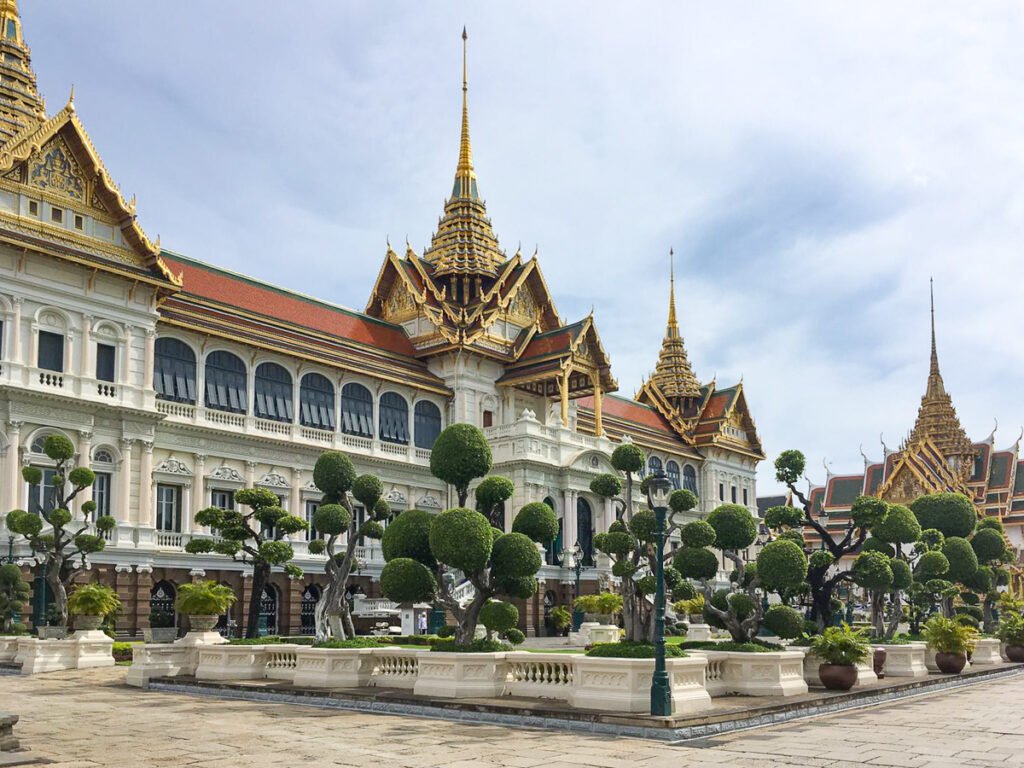
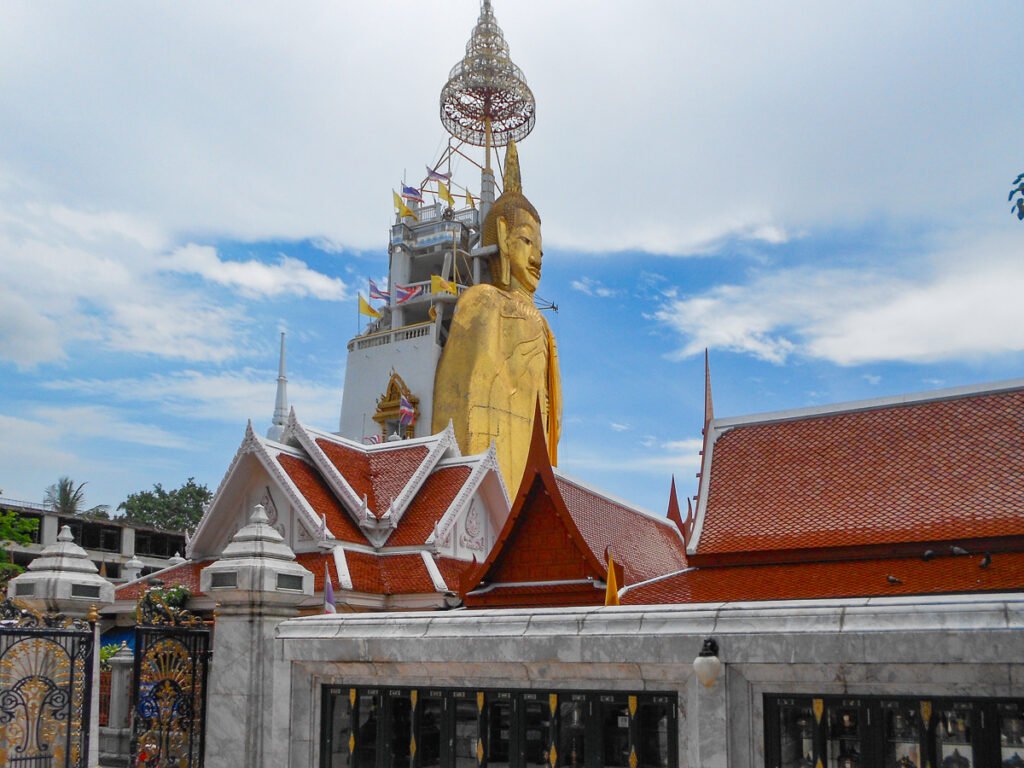
While backpacking in Thailand, you cannot miss Bangkok’s street food scene. We couldn’t resist tasting the city’s famous street food at The Market Bangkok. With just a few baths, we savored everything from aromatic pad thai to spicy som tam, and delicious fresh smoothies. A great way to eat local and stay on a budget!
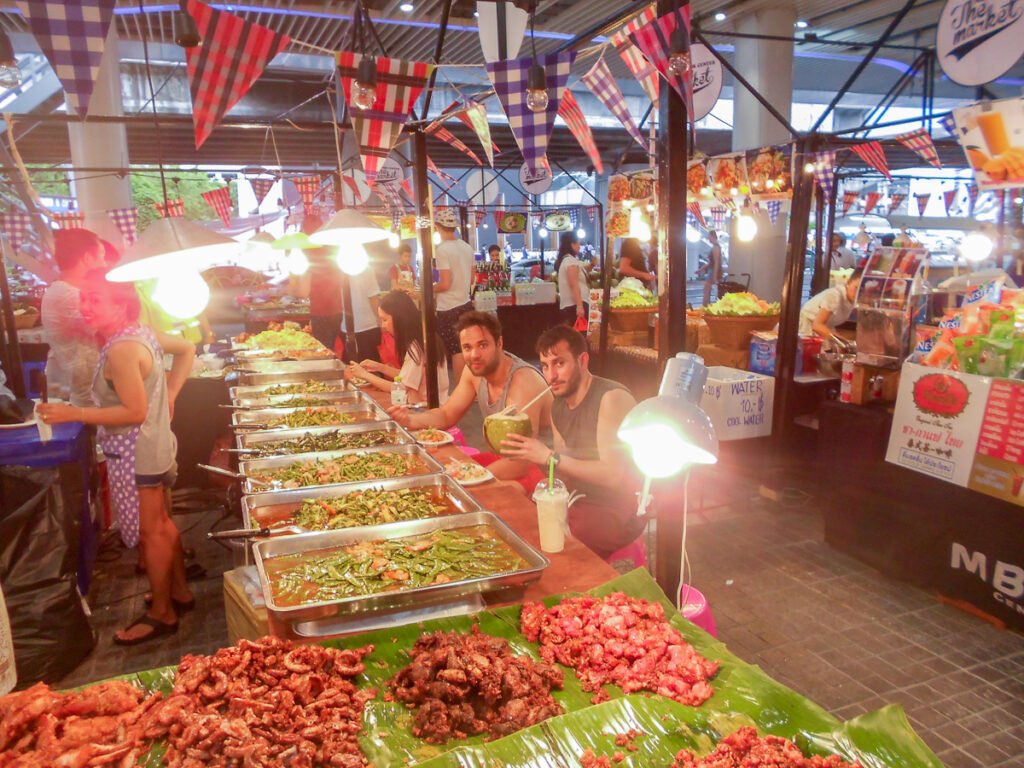
While in Bangkok, we stayed at Au Bon Hostel, a budget-friendly lodging with a simple yet comfortable layout.
Popular Tours in Bangkok
Exploring Krabi: A Paradise in Southern Thailand
After Bangkok, we flew to Krabi, a stunning province in southern Thailand, known for its breathtaking limestone cliffs, turquoise waters, and beautiful beaches. Krabi is a popular destination for adventure seekers looking to go island hopping. Flying from Bangkok is the quickest way to reach Krabi; you may get lucky and secure cheap airline fares like we did!
Krabi is wild! Railay Beach, with its dramatic limestone cliffs and crystal-clear waters, felt like a hidden paradise. It was the perfect spot for relaxing on the beach surrounded by vegetation.
We also ventured to the Emerald Pool, and taking a dip in the natural hot springs nearby was refreshing. Unfortunately, that day we got heavy rain so we couldn’t enjoy it fully.
We stayed at Railay Garden View Resort, a peaceful, back-to-nature retreat located on the east side of Railay Beach. Set on jungle-covered high ground with wooden bungalows, it offers stunning views of the Andaman Sea and the surrounding limestone cliffs. The resort is known for its tranquil, scenic atmosphere, making it ideal for couples and solo travelers looking for a quiet escape.
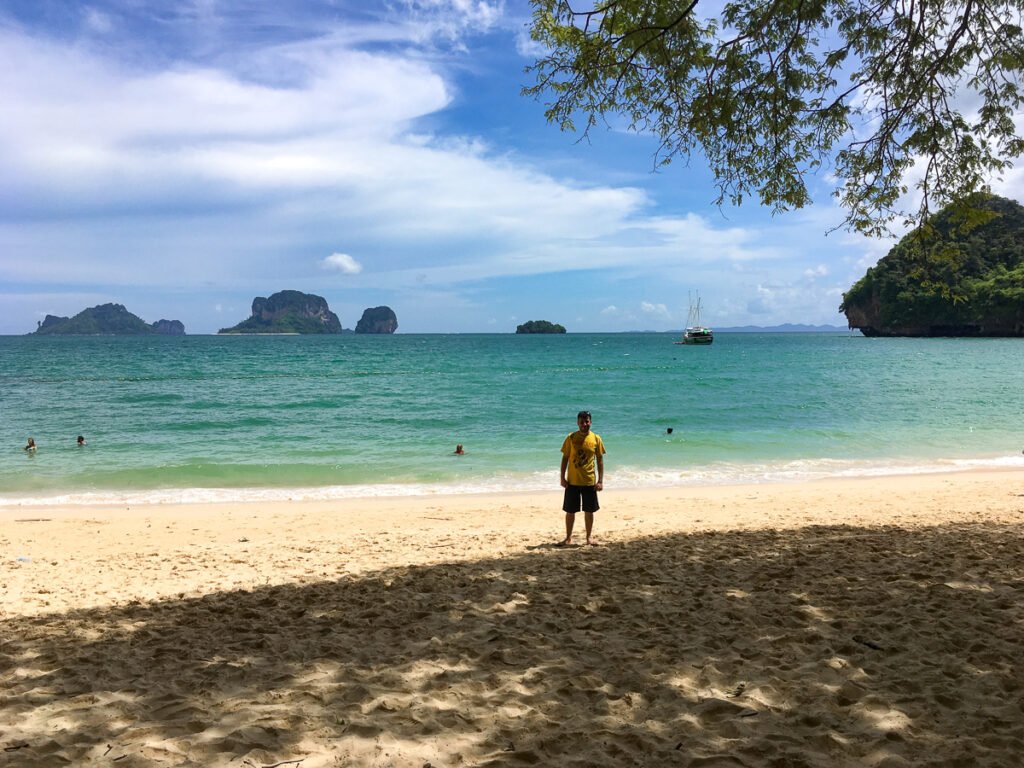
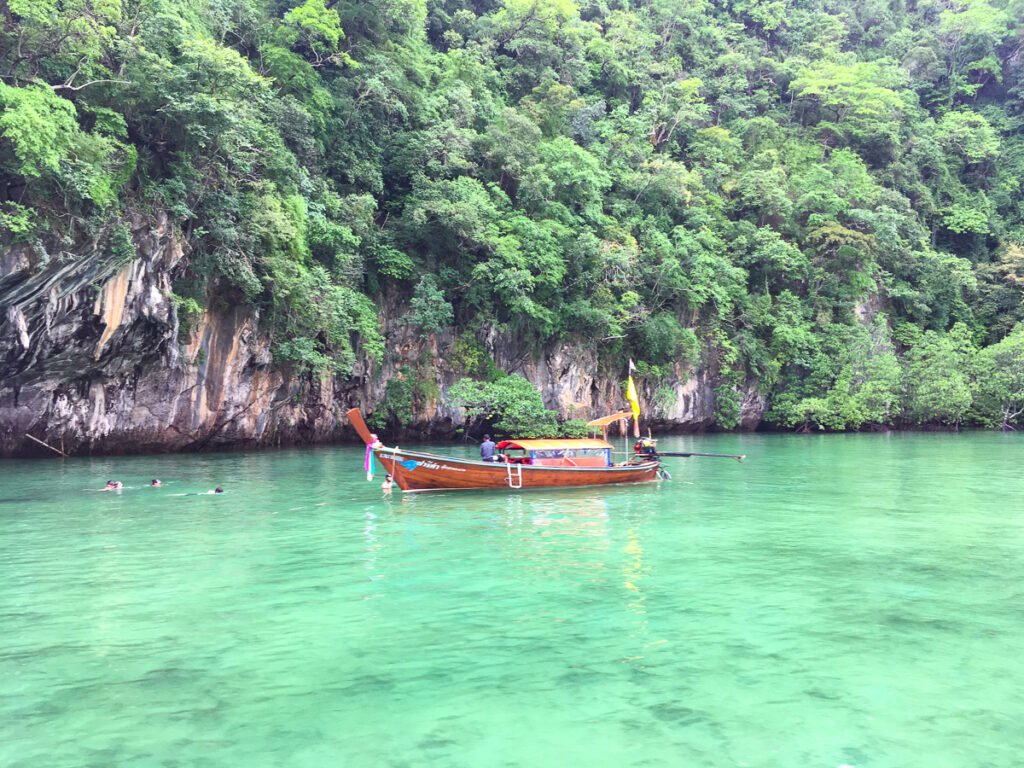
Phi Phi Islands: Crystal Waters and Unforgettable Adventures
After soaking up Krabi’s stunning landscapes, we continued our backpacking in Thailand adventure to one of the country’s most iconic destinations—Phi Phi Islands.
Travelling from Krabi to Phi Phi is relatively straightforward. We took a ferry, which is the most common and scenic route, allowing us to enjoy the incredible views of the Andaman Sea along the way. The ride typically lasts about 90 minutes, and ferries run frequently from Krabi’s Klong Jilard Pier.
Exploring the Phi Phi Islands
Once on the island, the energetic yet laid-back vibe that makes Phi Phi so popular greeted us. Phi Phi Don, the largest island, is where most accommodations, restaurants, and bars are located. Tonsai Village is the island’s hub, offering everything from budget hostels to upscale resorts. We stayed at the Reggae Inn, an old-fashioned hostel, perfect for backpackers, which allowed us to save a fair amount of money!
For those seeking adventure, there’s no shortage of things to do. You can hike the Phi Phi Viewpoint for breathtaking panoramic views, venture into the vibrant marine life through snorkeling trips, and relax on pristine beaches, such as Long Beach. If you’re up for a party, Phi Phi’s nightlife scene is famous for its beach bars, fire shows, and lively crowds.
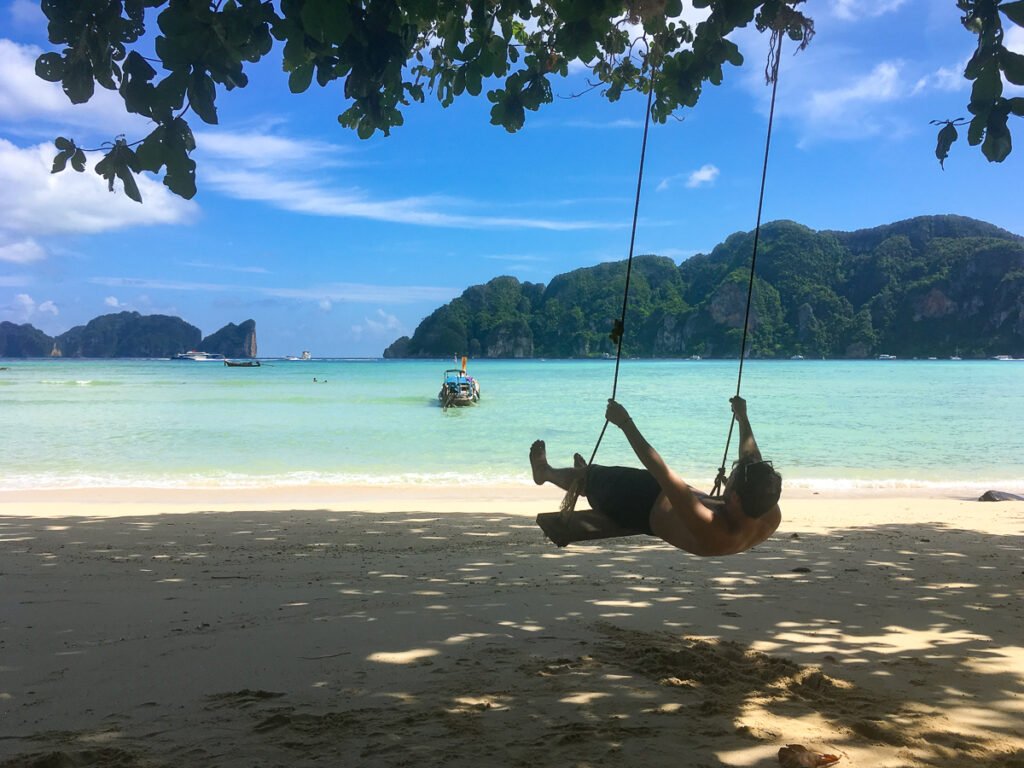
Island-Hopping in Thailand
A highlight of our Phi Phi trip was the chance to explore the surrounding islands and hidden gems. We did a boat tour around the island, stopping by Monkey Beach, where playful monkeys entertained the visitors. At Maya Bay, the boat stopped just at the entrance, and we were able to kayak into the bay. Unfortunately, I didn’t have a GoPro at the time yet.

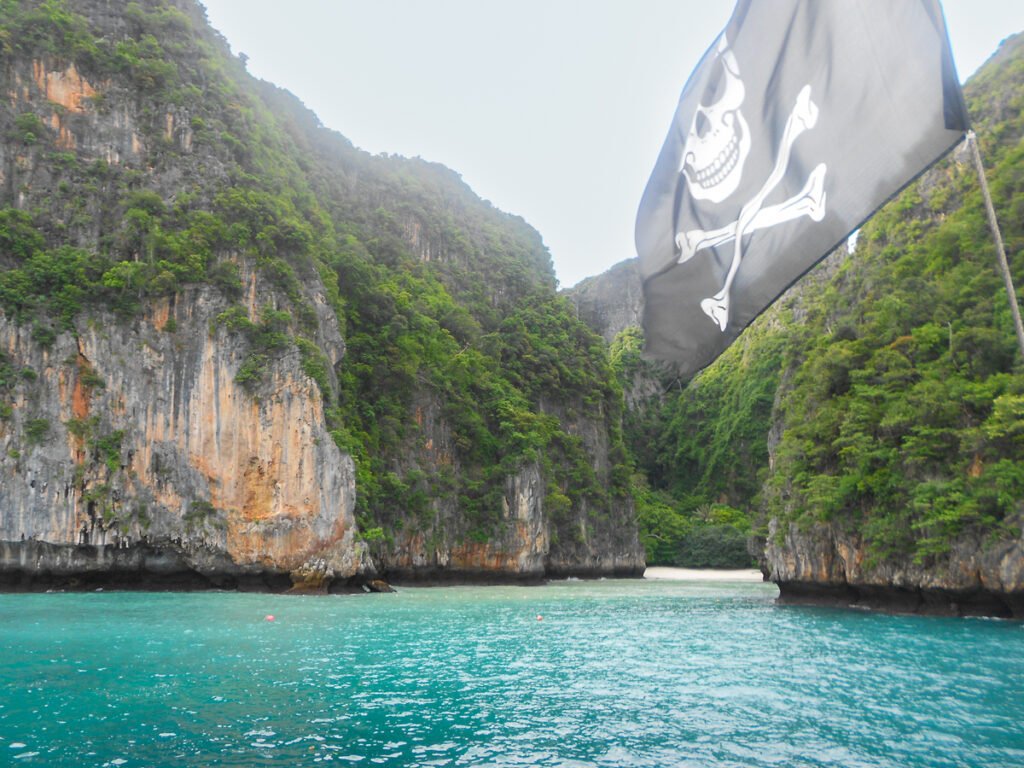
Are you enjoying this blog post? Follow us to see the latest updates
Backpacking in Thailand: Island Hopping Adventures
After Koh Phi Phi, the best route to continue our island-hopping journey was heading to Phuket. However, we really wanted to explore the eastern islands and also make a quick stop in Cambodia (I’ll talk more about this later). So we took a ferry back to Krabi, then a bus to Surat Thani, and then a mini-van to Donsak Pier to get a speedboat to Koh Phangan. It was a long journey, basically a full day! Nonetheless, it was all part of the experience.
TRAVEL ADVICE
The most straightforward way to manage this journey is by booking a combined ticket.
These tickets cover the ferry/speedboat, bus or minivan transfer,
and the final ferry to Koh Phangan or Koh Samui. It simplifies the process and ensures you have transportation arranged for each leg of the trip.
Discovering Koh Phangan: More Than Just a Party Island
The Full Moon Party on Haad Rin Beach attracts thousands of travelers for an all-night celebration of music, fire dancers, and neon body paint. If your visit doesn’t align with the full moon, don’t worry—there are also Half Moon and Black Moon parties, providing plenty of nightlife options year-round.
However, there’s a lot more to this island than its vibrant nightlife. Koh Phangan is easy to navigate, and renting a motorbike is one of the best ways to explore the island’s hidden spots. We’ve explored a mix of beautiful beaches, rich jungles, and spiritual retreats. The Haad Yao Beach offers quiet, isolated spots perfect for swimming or lounging in the sun. For nature lovers, Than Sadet Waterfall National Park is an excellent spot for hiking, with beautiful waterfalls and serene pools. Yoga studios, meditation centers, and detox programs are found all over the island, particularly in Srithanu Village.
We recommend staying at J.B. Hut Bungalows, just a short walk away from Haad Yao. There we enjoyed delicious food and beautiful sea views from our bungalows. Great location and value for money!
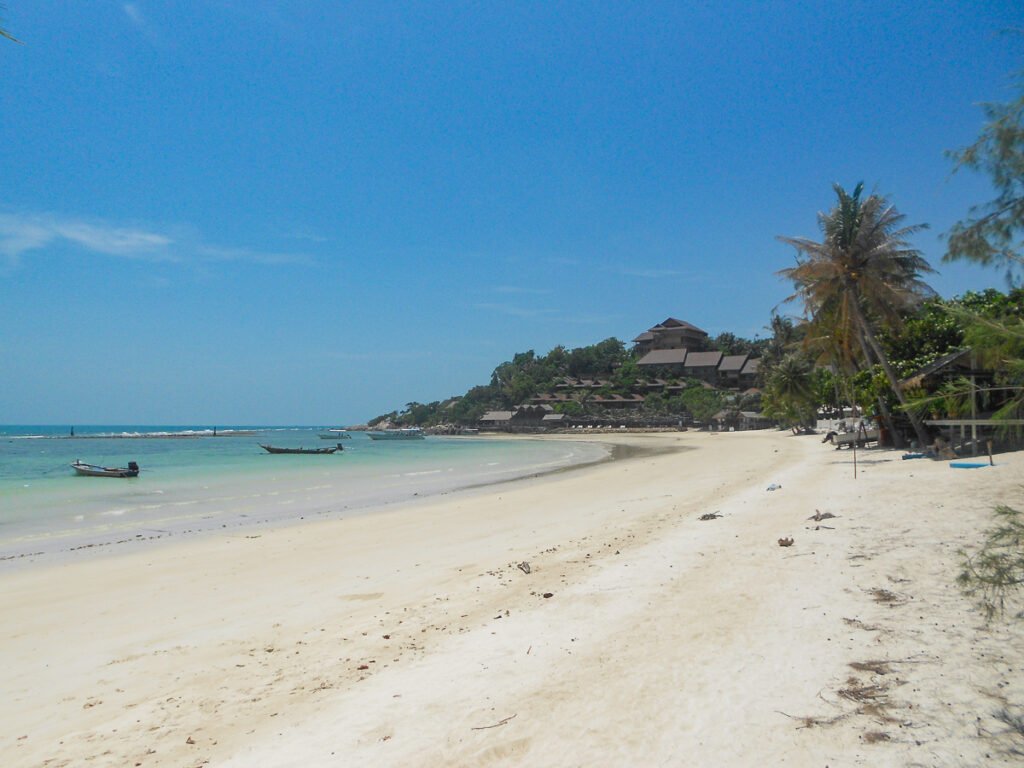
Koh Tao: A Must-Visit When Backpacking in Thailand
After the lively and diverse experience of Koh Phangan, Koh Tao offers a more tranquil setting. Known as Thailand’s diving capital, Koh Tao is perfect for exploring the marine world or enjoying laid-back beach life.
If diving isn’t your thing, Koh Tao also offers fantastic snorkeling. Head to Shark Bay, Aow Leuk, or Mango Bay to discover vibrant marine life just a few meters from the shore.
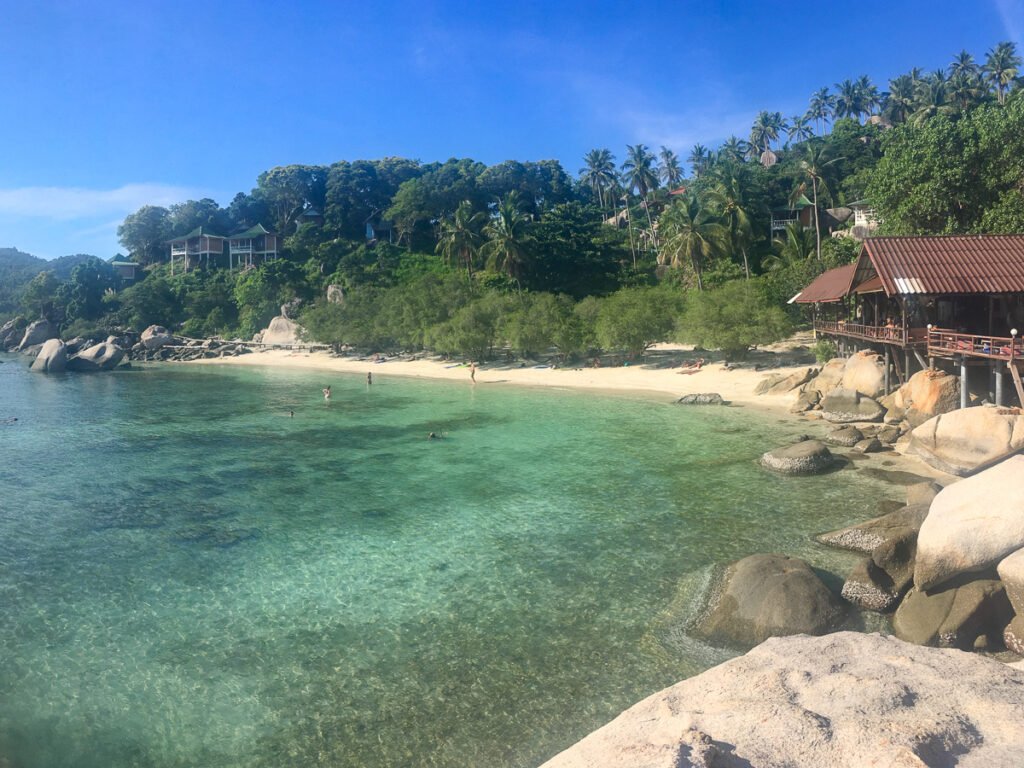
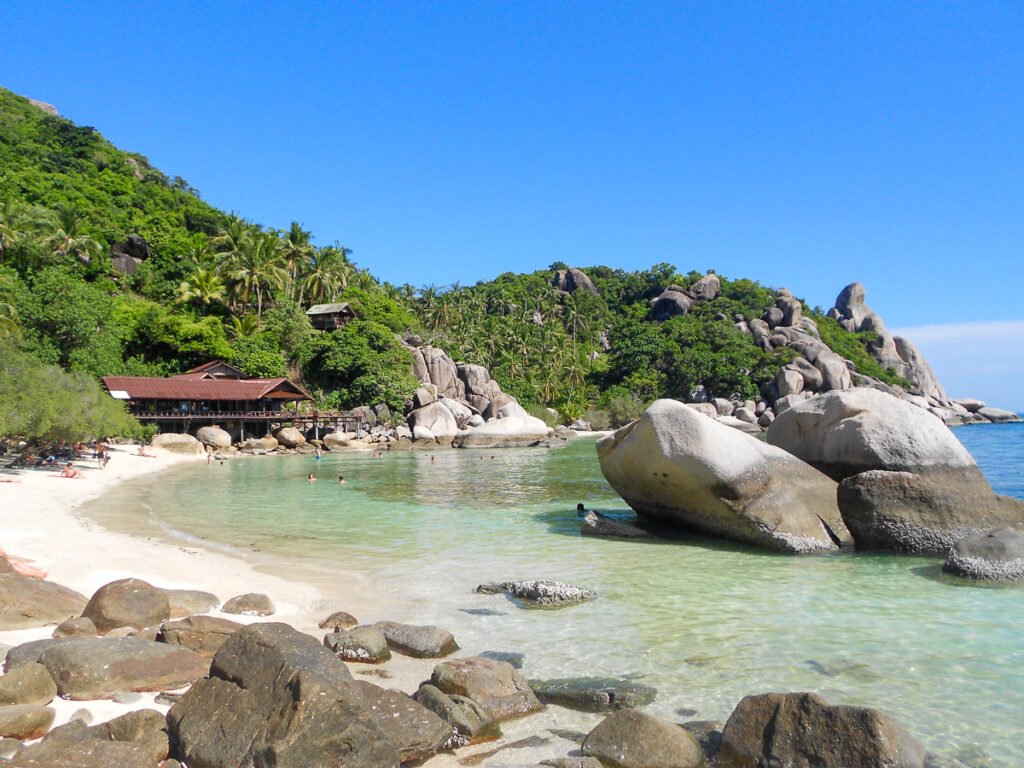
Do not miss a boat trip to Koh Nang Yuan, a stunning trio of islets connected by a sandbar. This tiny island offers beautiful beaches and some of the best snorkeling spots around Koh Tao. The viewpoint on Koh Nang Yuan, accessible via a short but steep hike from the beach, is one of the most photographed views in Thailand.
What’s great about Koh Tao is also the abundance of villas and exclusive apartments at fair prices. We suggest staying at the stylish Koh Tao Heights Studio Apartments with its sea views.
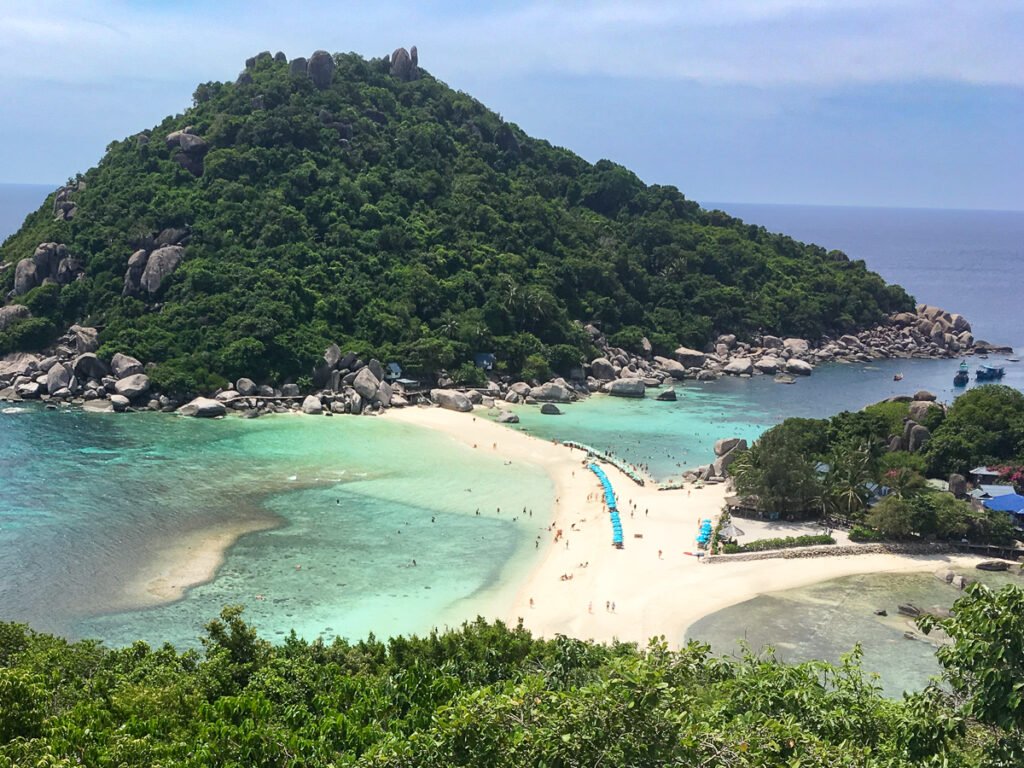
Getting to Koh Tao from Koh Phangan
The easiest way to travel from Koh Phangan to Koh Tao or Koh Samui is by ferry. Companies like Lomprayah, Seatran Discovery, and Songserm connect the two islands. The journey takes around 1.5 to 2 hours and offers beautiful views of the surrounding islands.
Koh Samui: The Perfect Blend of Adventure and Relaxation
After exploring Koh Tao, it was time for us to move to Koh Samui, where we stayed for a week. We’ve explored lush jungles, relaxed on pristine beaches, and enjoyed Thailand’s renowned hospitality. Koh Samui should be on your backpacking in Thailand itinerary!
Best Beaches in Koh Samui
Koh Samui’s beaches cater to every traveler, from those seeking lively beach bars to those preferring quieter, hidden coves. We stayed at Bangrak Beach on the northern coast of Koh Samui. Bangrak Beach offers a laid-back atmosphere, with several beachfront restaurants, chill-out bars, and accommodations. The waters here are calm, making it ideal for swimming and relaxing. It proved to be a perfect stop for backpackers seeking a tranquil experience while still being near key attractions on the island.
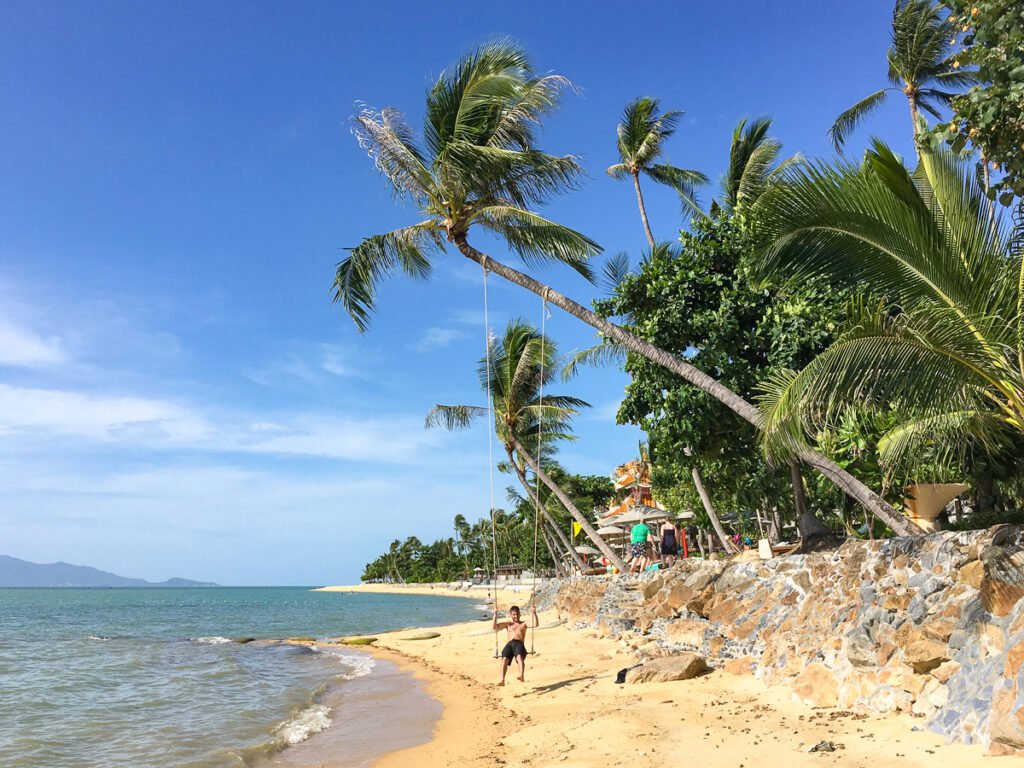
Quite the opposite, Chaweng Beach is the hub for nightlife and beach clubs. While it can get overcrowded, its soft white sand and turquoise waters make it worth the visit.
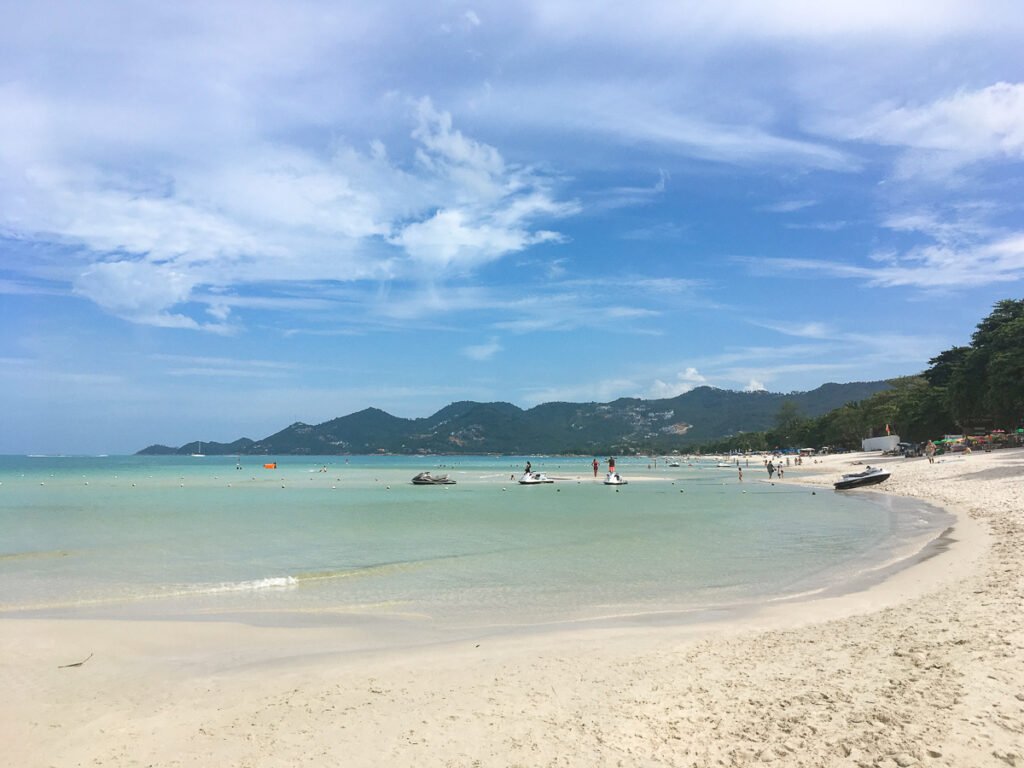
Lamai Beach is slightly less crowded but still lively, offering a mix of beach bars, great swimming spots, and a laid-back vibe.
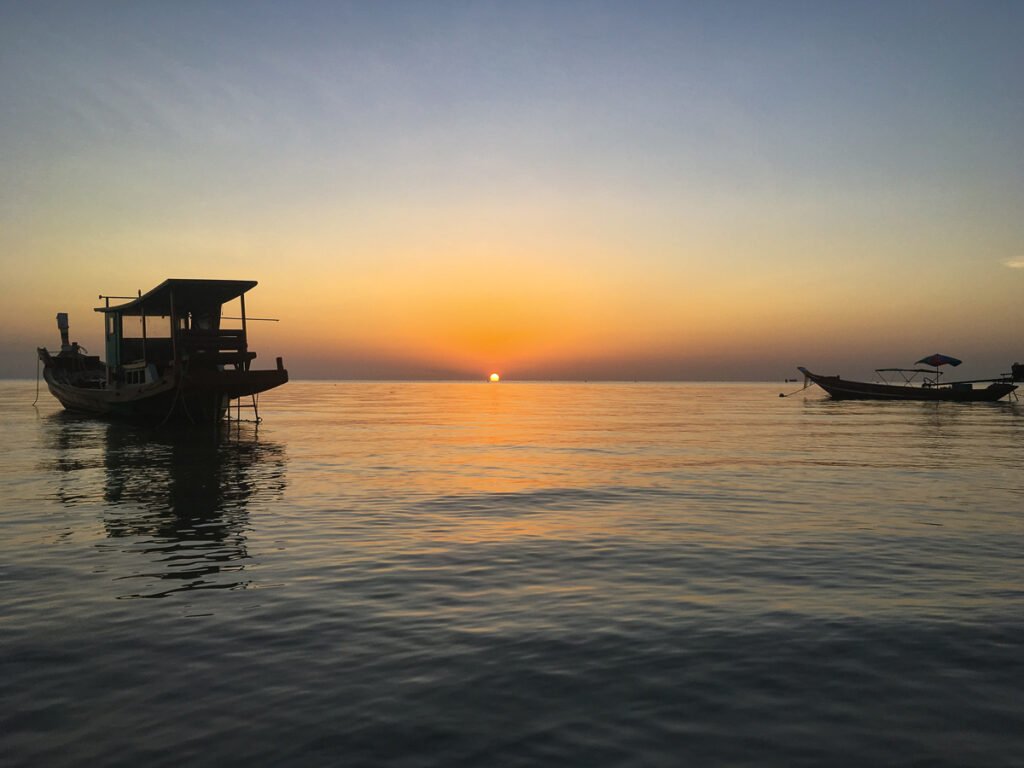
Bophut Beach is home to the famous Fisherman’s Village, offering a more tranquil beach atmosphere with great shopping, upscale restaurants, and chic boutiques.
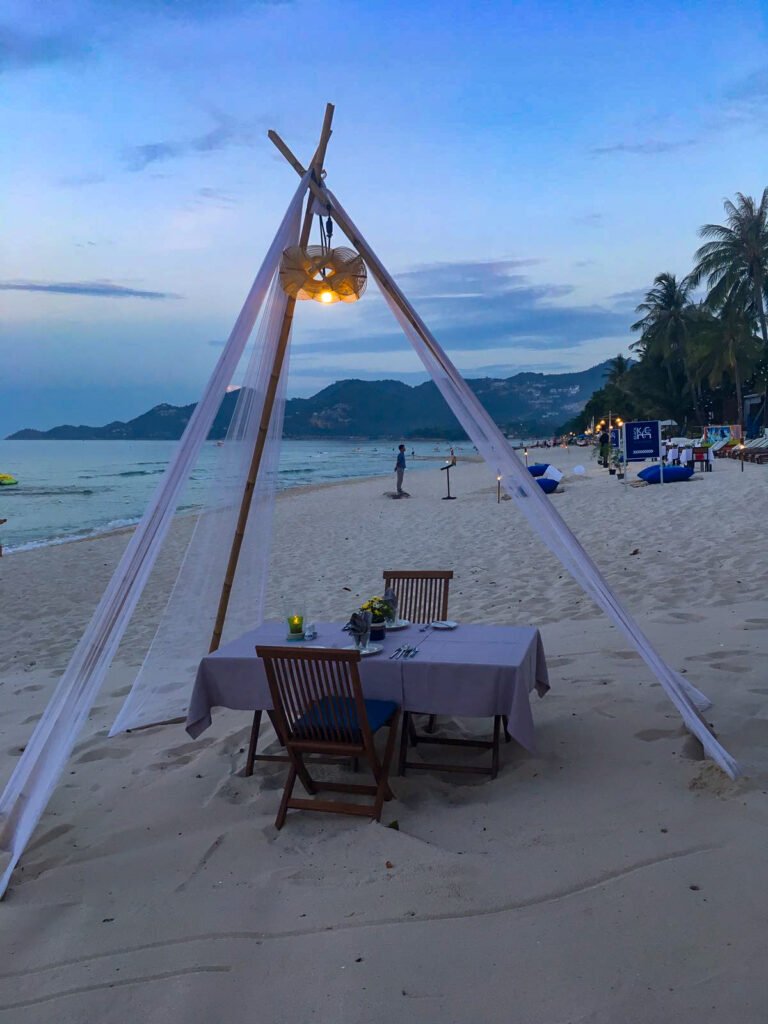
Koh Samui Island Exploration: Temples and Nature
Renting a motorbike is the best way to explore the island. If you’re in for more temples and religious landmarks, don’t miss the Big Buddha (Wat Phra Yai) a 12-meter golden statue, and Wat Plai Laem, a Buddhist temple complex featuring a striking statue of Guanyin, the Goddess of Mercy.
Whilst we did not visit these two landmarks, we spent a day trekking and relaxing at Na Muang Waterfalls. Located in the island’s jungle interior, the Na Muang waterfalls are a must-see, offering incredible views of the lush, green valley below. The main waterfall, Na Muang 2, cascades into a large pool where you can cool off after a short hike.
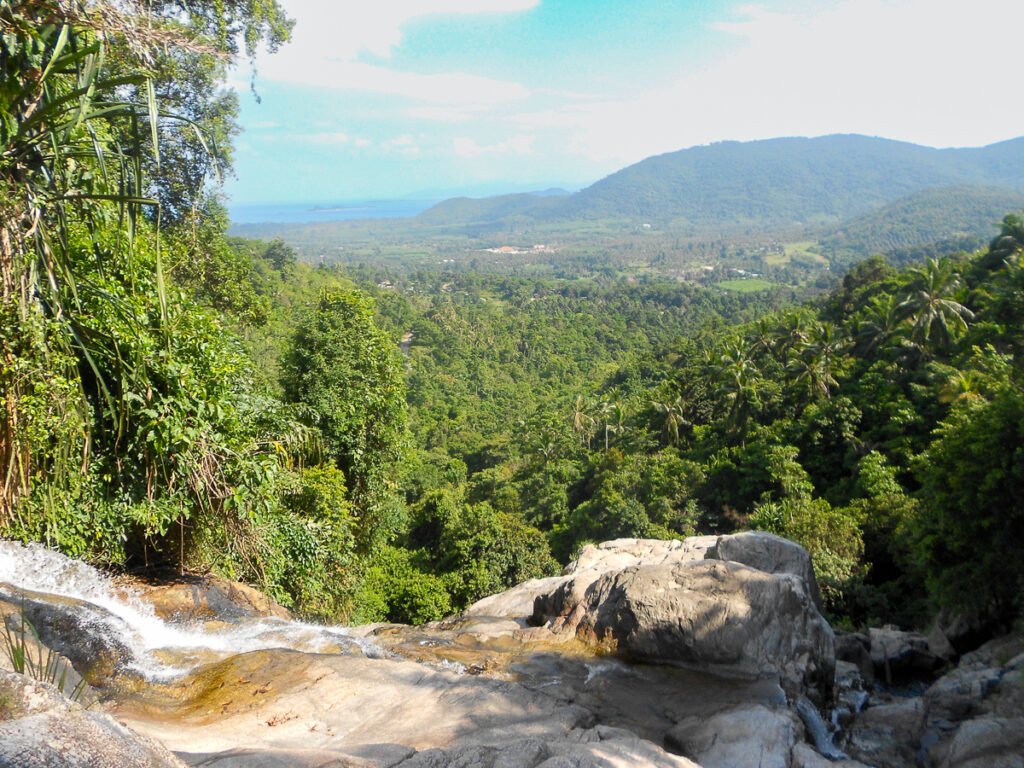
Heading to Phuket: A Backpacker's Heaven?
After soaking in the laid-back vibe of Koh Samui, it was time to take our backpacking in Thailand adventure to Phuket. We took a short direct flight from Koh Samui to Phuket to save time, but the combo ferry-bus is also available.
Phuket is one of the most popular destinations in Thailand, known for its nightlife vibes and wild landscapes. It’s also a convenient point to boat tour the Phi Phi islands.
Patong Beach is Phuket’s most famous stretch of sand, known for its buzzing nightlife, street markets, and beach parties. Phuket has plenty of budget-friendly activities, including jungle treks to hidden beaches like Freedom Beach. The jungle path is about a 10-15 minute walk, and while it can be a bit challenging, it adds to the adventure and ensures the beach remains relatively uncrowded compared to other spots on the island.
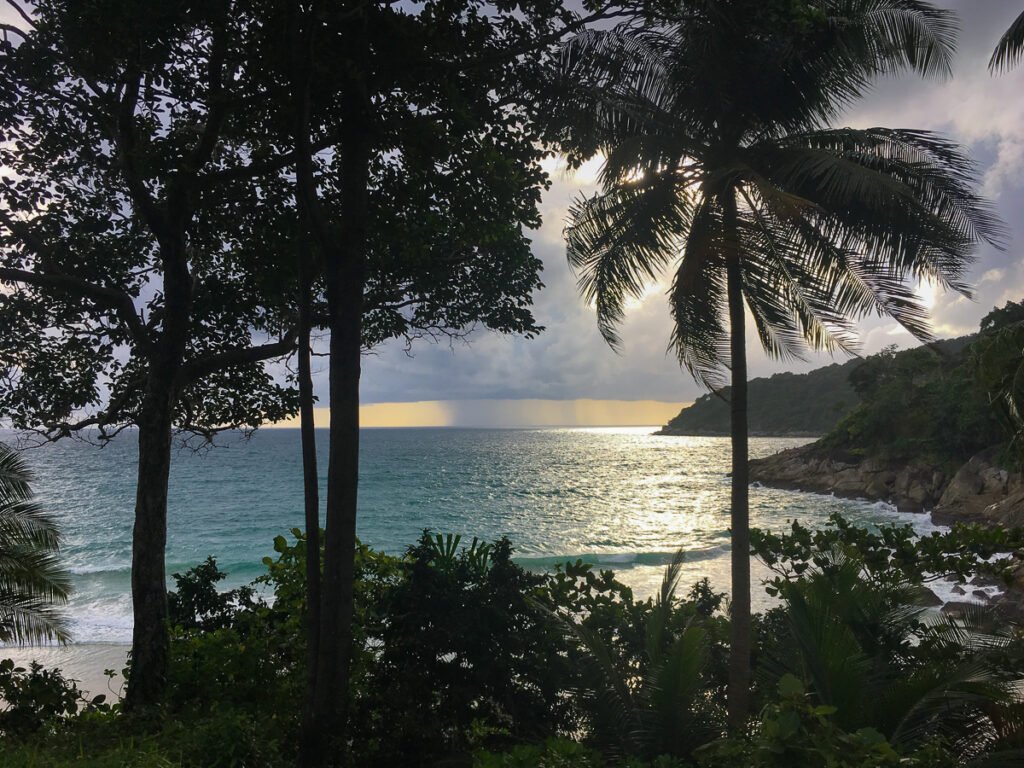
Although Phuket is often considered a “backpacker’s heaven”, I must say this is the island we enjoyed the least. Patong Beach’s Bangla Road is overly commercialized and packed with tourists. In addition, prices for food, drinks, and activities are significantly higher compared to other regions in Thailand. Overall, we found much nicer beaches and lower prices in the likes of Koh Tao.
With this being said, there is also cheaper accommodation available, such as the All Blue Guesthouse, which is where we stayed. To conclude, if you’re purely looking for a social backpacking experience, Phuket and Koh Phangan are your best bets.
Final Stop: Siem Reap and Exploring Angkor Wat
Our last stop on this incredible backpacking journey is Siem Reap, Cambodia, home to one of the most breathtaking archaeological wonders in the world—Angkor Wat.
Built in the early 12th century, Angkor Wat was originally dedicated to the Hindu god Vishnu, but later became a Buddhist temple. Its vast corridors, intricate carvings, and towering spires make it one of the most awe-inspiring structures you’ll ever encounter.
We visited the temple at sunrise with The Angkor Wat Tour. The sight of the sun rising behind the iconic silhouette of the temple is unforgettable. Arriving early allows you to explore before the heat and crowds settle in. Make sure to explore temples beyond Angkor Wat, such as Bayon and the tree-covered ruins of Ta Prohm.
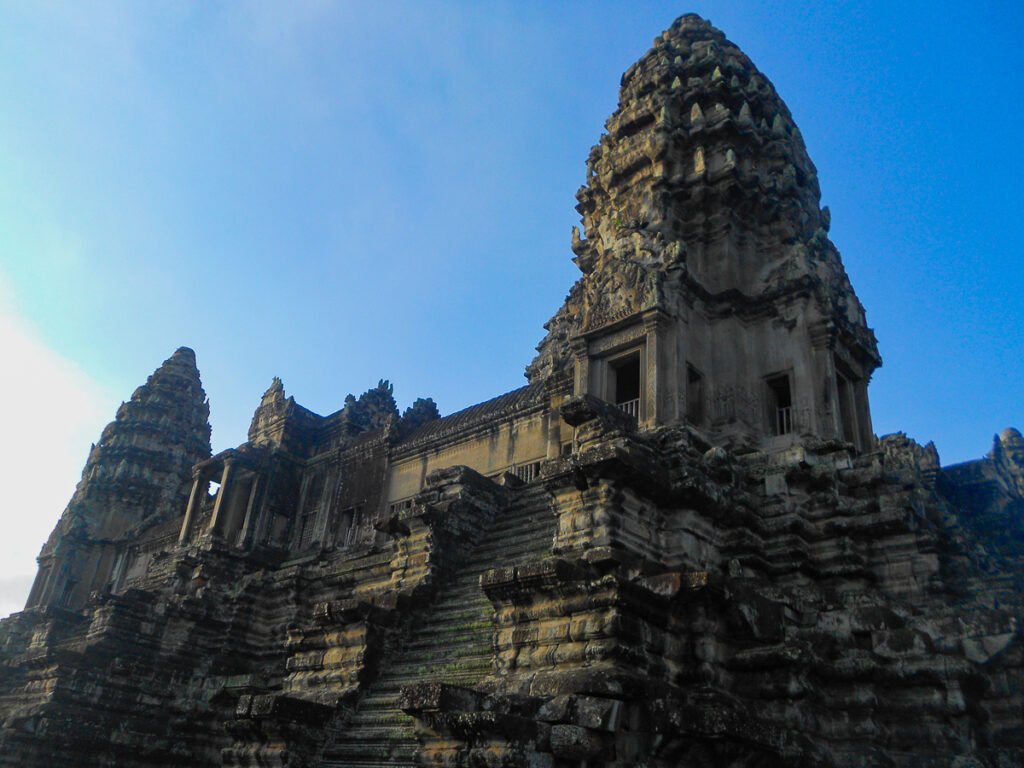
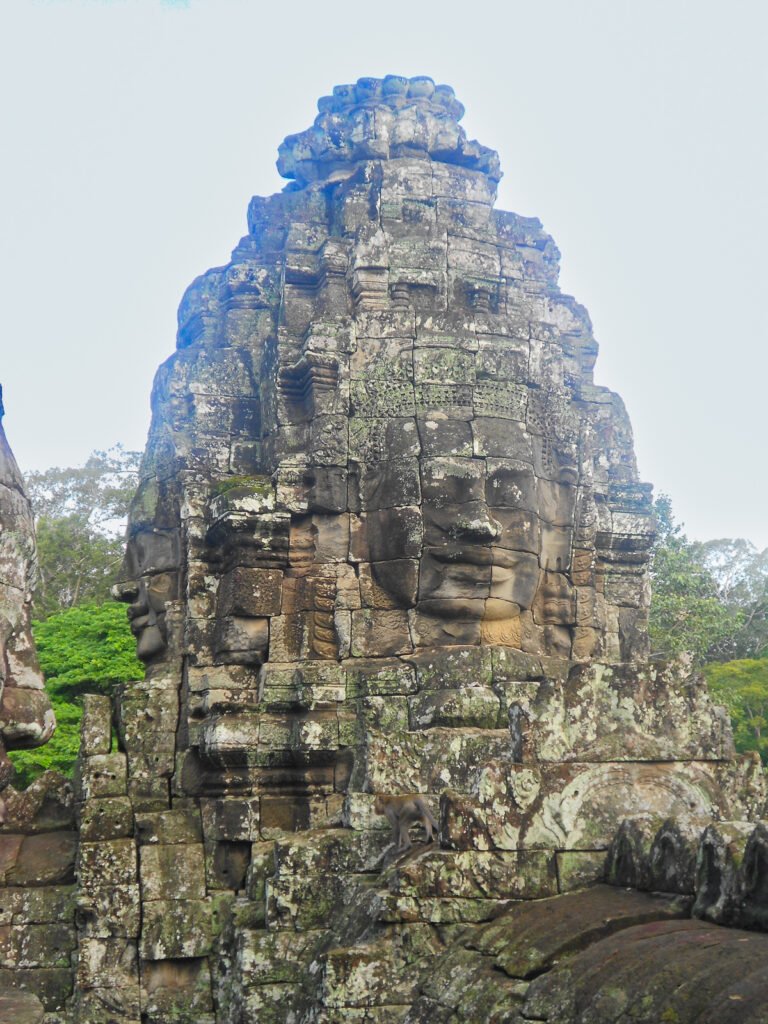
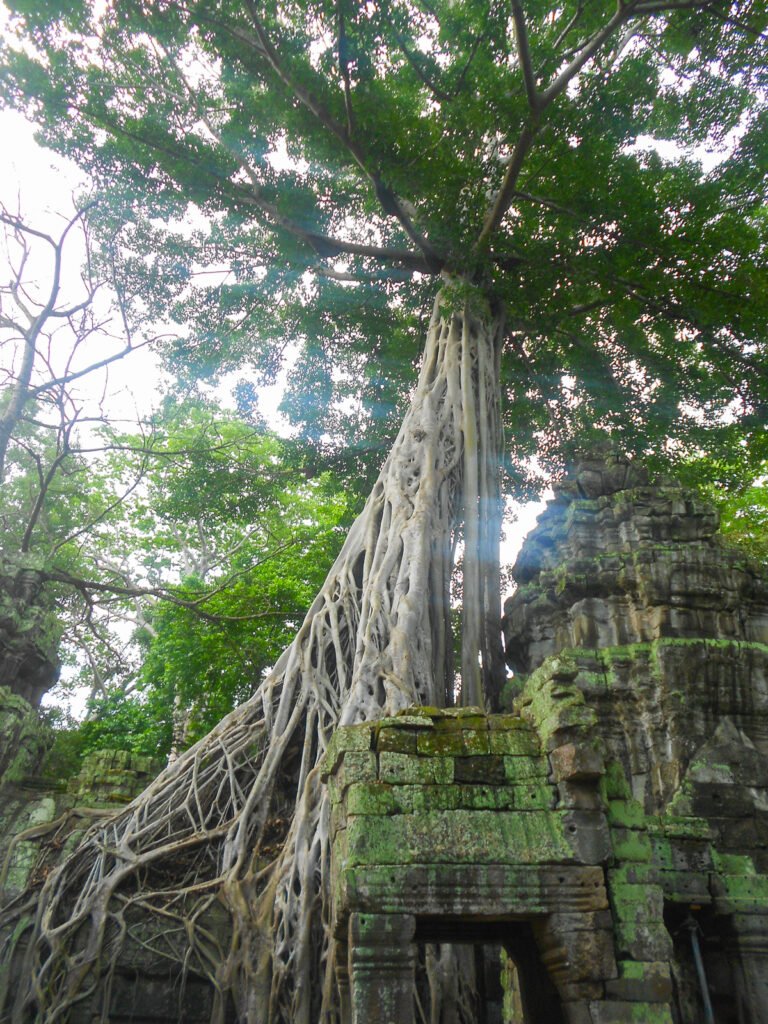
The stilted village Kampong Phluk
Before leaving Siem Reap, we ventured into Kampong Phluk, one of the largest stilted villages in Cambodia. What makes Kampong Phluk particularly unique is the dramatic shift in its landscape with the changing seasons. During the dry season, the towering stilt houses, built on stilts up to 10 meters high, rise far above the ground, creating a surreal atmosphere as they seem to loom over the dry land. However, during the rainy season, the water level of the Tonle Sap Lake rises significantly, often flooding the area and transforming the village into a floating one, with residents relying on boats to navigate between houses.
Compared to other floating villages, Kampong Phluk is far less commercialized and offers a more genuine insight into the local way of life. Thanks to this Kampong Phluk Tour, we had the opportunity to discover this impressive area around Tonle Sap, the largest freshwater lake in Southeast Asia, and a UNESCO Biosphere Reserve.
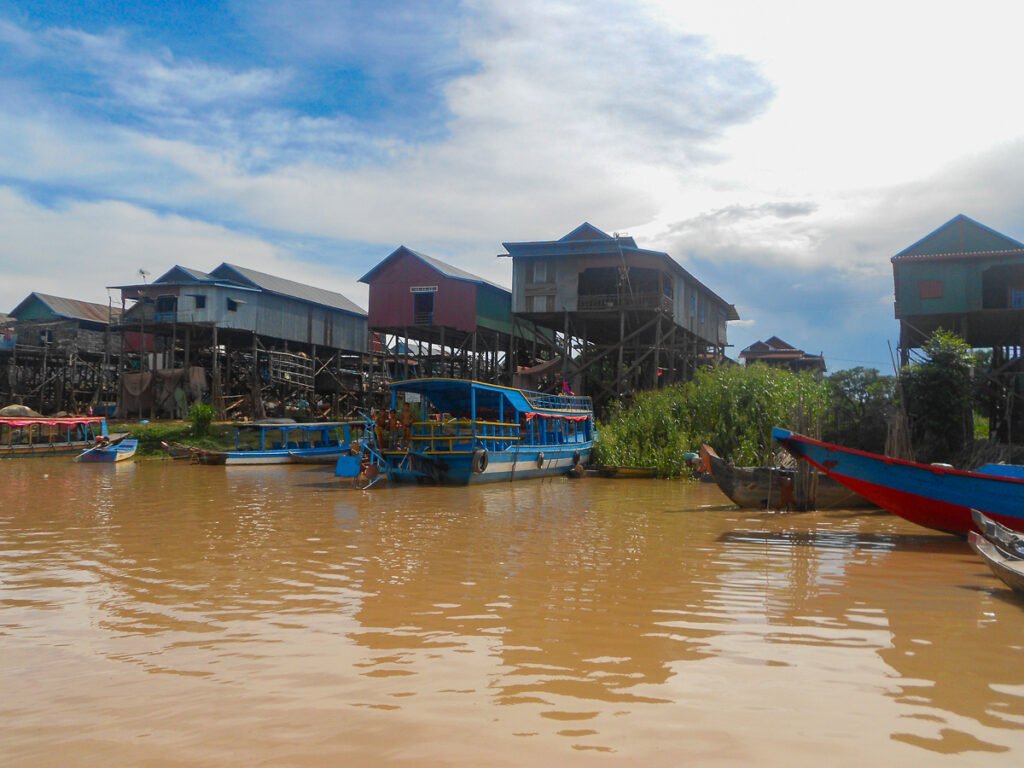
Backpacking in Thailand: Temples, Beaches, and Beyond
FAQs
Thailand is located in Southeast Asia, at the heart of the Indochinese Peninsula.
While Thai is the official language, English is widely spoken in tourist areas, major cities, and popular islands. Many people in the tourism industry can communicate in English, but proficiency levels may vary outside these areas.
Thailand is famous for its rich culture, beautiful temples, stunning beaches, and islands. It’s also known for its flavorful cuisine, street food, vibrant nightlife, and historical landmarks such as the Grand Palace and ancient ruins.
The official currency of Thailand is the Thai Baht (THB).
Some of the most popular islands to visit include:
- Koh Phangan: For beaches and nightlife.
- Koh Samui: Offers luxury resorts, palm-fringed beaches, and vibrant nightlife.
- Koh Phi Phi: Famous for its dramatic cliffs and Maya Bay.
- Koh Tao: A top destination for scuba diving and snorkeling.
Before You Go
Time for Conclusions...
In this post, we’ve relived our incredible four-week backpacking journey through Thailand and Cambodia, an adventure that will stay with us forever. We began in Bangkok, Thailand’s energetic capital—a perfect launchpad for any backpacking adventure. From there, we ventured to Krabi, home to stunning beaches and hidden coves, an ideal starting point for island-hopping.
Koh Phangan, Koh Tao, and Koh Samui captivated us with their pristine beaches and laid-back vibes, truly embodying the spirit of Thailand’s island life. Over in Phi Phi, we discovered some of the country’s most beautiful beaches, while Phuket, though more commercialized, still had something to offer for backpackers seeking vibrant nightlife and party scenes.
Our journey ended in Siem Reap, where we marveled at the majestic Angkor Wat. This UNESCO World Heritage Site was the perfect way to conclude our trip—a breathtaking cultural experience that made the detour to Cambodia more than worth it.
Peace of mind is just one click away.
Get insured now
